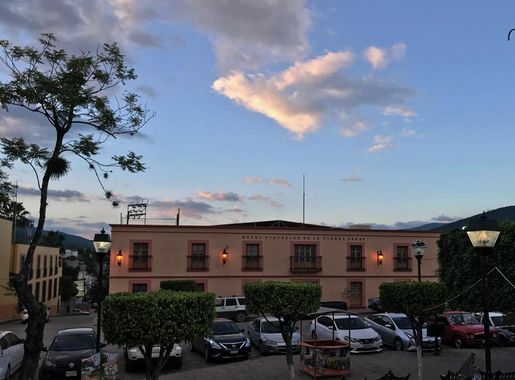
The Timeless Charm of Centro Historico, Queretaro
Discover the timeless charm of Centro Historico in Queretaro, a UNESCO World Heritage site brimming with history, vibrant culture, and culinary delights.
Nestled in the heart of Mexico, Centro Historico in Queretaro is a breathtaking blend of rich history, vibrant culture, and architectural splendor. Recognized as a UNESCO World Heritage site, this neighborhood offers a unique glimpse into Mexico's colonial past, with cobblestone streets, stunning churches, and meticulously preserved buildings that date back to the 16th century. Strolling through Centro Historico, you will encounter an array of picturesque plazas like Jardin Zenea and Plaza de Armas, where you can relax and soak in the local atmosphere. The neighborhood is also home to an impressive collection of museums, such as the Museo Regional de Queretaro, which provides a deep dive into the region's fascinating history and cultural heritage. Food enthusiasts will find themselves in paradise, as Centro Historico boasts an abundance of traditional restaurants and street food vendors serving up mouthwatering Mexican cuisine. From savory tacos to sweet churros, there's something to satisfy every palate. The vibrant nightlife is equally enticing, with numerous bars and cafes offering everything from live music to artisan cocktails. Centro Historico is not just about the past; it is a lively and bustling area that celebrates both its heritage and its contemporary culture. Whether you're a history buff, a foodie, or simply looking to explore a beautiful and dynamic part of Mexico, Centro Historico in Queretaro promises an unforgettable experience.
Local tips in Centro Historico
- Visit early in the morning to avoid the crowds and enjoy a peaceful exploration of the historic sites.
- Wear comfortable shoes as the cobblestone streets can be uneven and require some walking.
- Don't miss the evening light and sound show at the stunning Aqueduct of Queretaro.
- Try the local specialty, enchiladas queretanas, at one of the traditional restaurants.
- Keep an eye out for local festivals and events which often take place in the main plazas.
The Timeless Charm of Centro Historico, Queretaro
Nestled in the heart of Mexico, Centro Historico in Queretaro is a breathtaking blend of rich history, vibrant culture, and architectural splendor. Recognized as a UNESCO World Heritage site, this neighborhood offers a unique glimpse into Mexico's colonial past, with cobblestone streets, stunning churches, and meticulously preserved buildings that date back to the 16th century. Strolling through Centro Historico, you will encounter an array of picturesque plazas like Jardin Zenea and Plaza de Armas, where you can relax and soak in the local atmosphere. The neighborhood is also home to an impressive collection of museums, such as the Museo Regional de Queretaro, which provides a deep dive into the region's fascinating history and cultural heritage. Food enthusiasts will find themselves in paradise, as Centro Historico boasts an abundance of traditional restaurants and street food vendors serving up mouthwatering Mexican cuisine. From savory tacos to sweet churros, there's something to satisfy every palate. The vibrant nightlife is equally enticing, with numerous bars and cafes offering everything from live music to artisan cocktails. Centro Historico is not just about the past; it is a lively and bustling area that celebrates both its heritage and its contemporary culture. Whether you're a history buff, a foodie, or simply looking to explore a beautiful and dynamic part of Mexico, Centro Historico in Queretaro promises an unforgettable experience.
Iconic landmarks you can’t miss
Alameda Hidalgo
Discover the enchanting Alameda Hidalgo, a serene community garden and museum in Santiago de Querétaro, offering a blend of nature and culture.
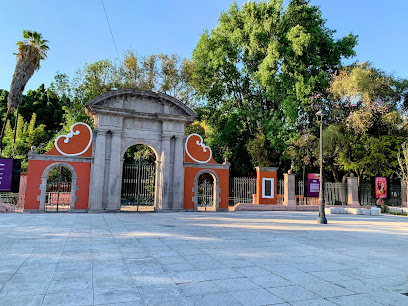
Guía de turistas de la ciudad de Querétaro
Explore the historic charm and vibrant culture of Querétaro, a UNESCO World Heritage site filled with stunning architecture and delightful local cuisine.
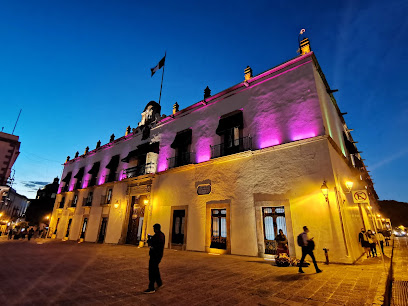
Mirador de los Arcos
Experience panoramic views and vibrant local culture at Mirador de los Arcos, a must-visit scenic spot in Santiago de Querétaro, Mexico.
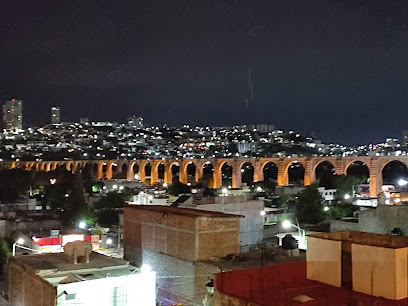
Jardín Guerrero
Discover the beauty of Jardín Guerrero, a serene garden in Santiago de Querétaro, perfect for relaxation and cultural immersion.
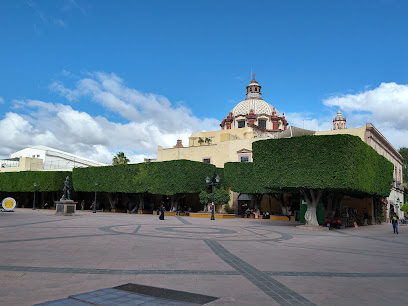
Acueducto de Querétaro
Discover the stunning Acueducto de Querétaro, a historical landmark that embodies the architectural beauty and cultural heritage of Santiago de Querétaro.
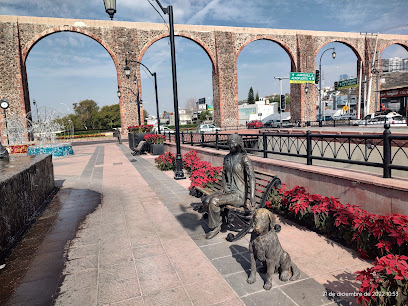
Plaza de los Fundadores
Discover the charm and history of Plaza de los Fundadores, a vibrant tourist attraction in the heart of Santiago de Querétaro.
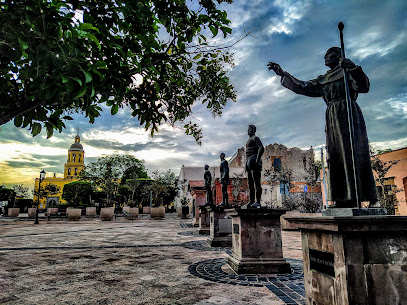
Monument of the Corregidora
Discover the Monument of the Corregidora, a historic landmark in Santiago de Querétaro that symbolizes Mexico's rich heritage and vibrant culture.
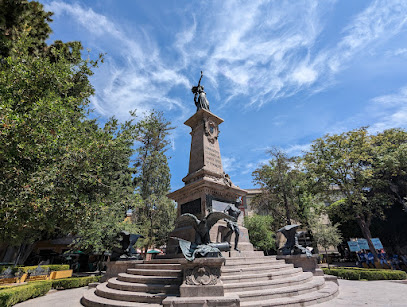
Neptune Fountain
Explore the enchanting Neptune Fountain in Santiago de Querétaro, a stunning baroque landmark showcasing the city's rich history and vibrant culture.

Museo Regional de Querétaro
Explore the rich heritage of Querétaro at the Museo Regional, showcasing artifacts and exhibits that bring the region's history to life.
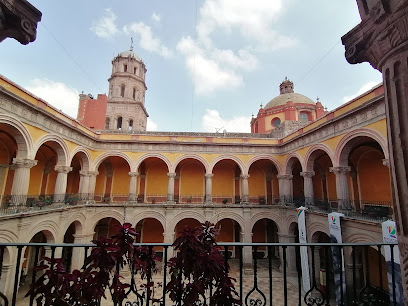
Museo Casa de la Zacatecana
Explore the vibrant history and culture of Santiago de Querétaro at Museo Casa de la Zacatecana, a must-visit museum for every traveler.
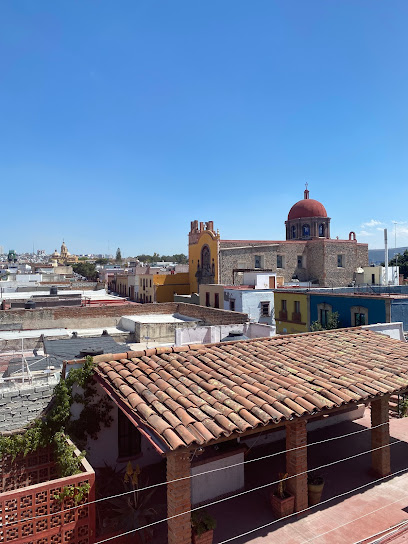
Museo de la Ciudad
Explore the rich history and vibrant culture of Santiago de Querétaro at the Museo de la Ciudad, a must-visit destination for tourists.
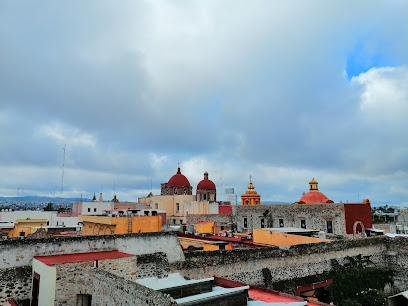
Las letras de Querétaro
Explore Las Letras de Querétaro, a vibrant artistic landmark in the heart of Santiago de Querétaro, rich in culture, history, and unforgettable photo opportunities.
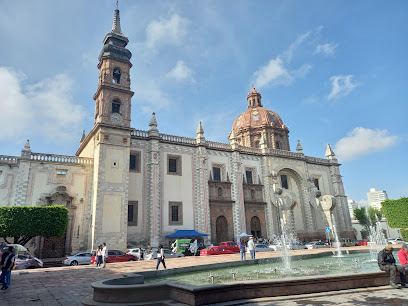
The Children Heroes of the Battle of Chapultepec
Explore the legacy of bravery at The Children Heroes of the Battle of Chapultepec, a touching historical landmark in Querétaro celebrating youthful valor.
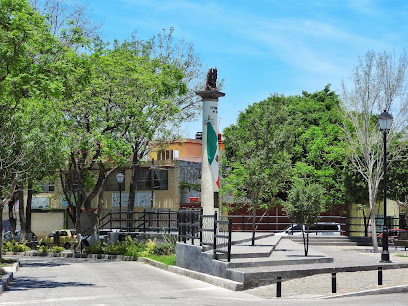
Arcos Qro
Explore Arcos Qro, a stunning historical landmark in Santiago de Querétaro, reflecting rich cultural heritage and architectural beauty.
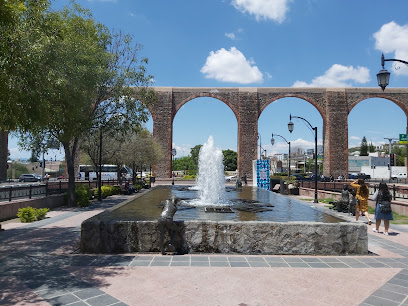
Monumento a la Bandera
Discover the Monumento a la Bandera in Santiago de Querétaro, a historical landmark symbolizing national pride amidst beautiful urban scenery.
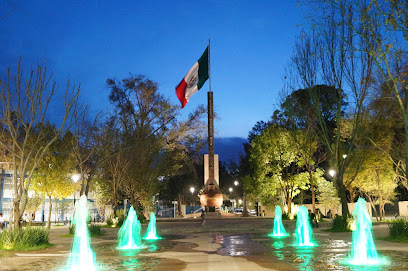
Unmissable attractions to see
Jardín Guerrero
Discover the serene beauty of Jardín Guerrero in Santiago de Querétaro, a perfect blend of lush nature and rich cultural heritage.
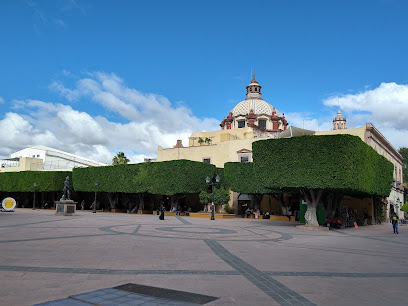
Museo Regional de Querétaro
Uncover the fascinating history and culture of Querétaro at the Museo Regional, a must-visit local history museum in a stunning colonial setting.
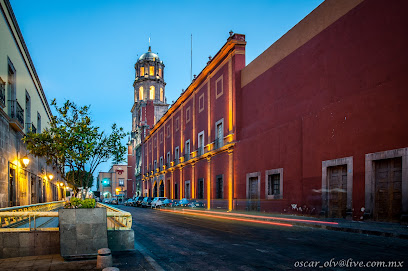
Museo de la Ciudad
Explore the rich history and vibrant culture of Santiago de Querétaro at the Museo de la Ciudad, a captivating destination for all travelers.
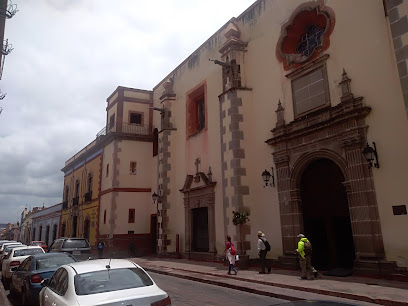
Las letras de Querétaro
Explore the vibrant Las Letras de Querétaro - a cultural gem showcasing stunning art and the rich heritage of Santiago de Querétaro.
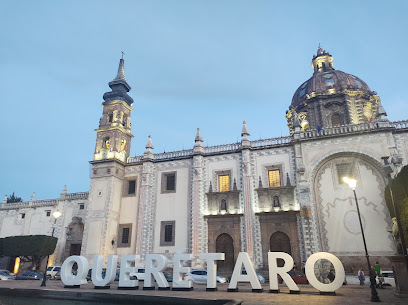
Museo de los Conspiradores
Explore the intriguing narratives of Mexico's revolutionary past at Museo de los Conspiradores in Santiago de Querétaro, a must-visit local history museum.

Museo de la Restauración de la República
Explore the profound history of Mexico at Museo de la Restauración de la República, where the past comes alive through engaging exhibits and rich cultural narratives.

Escultura a la Tolerancia
Explore the Escultura a la Tolerancia in Santiago de Querétaro, a magnificent tribute to unity and acceptance in a vibrant cultural setting.
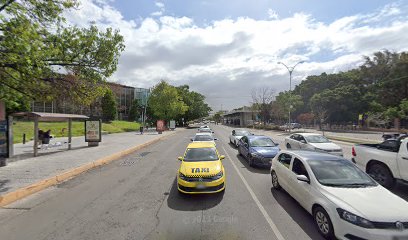
Essential places to dine
Chucho El Roto
Savor the true taste of Mexico at Chucho El Roto in Santiago de Querétaro - where tradition meets flavor in every dish.
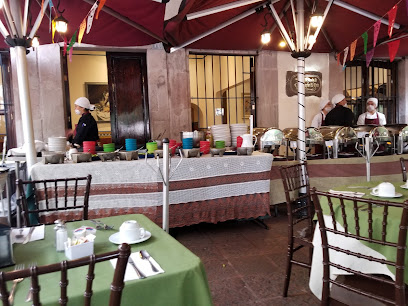
María y su Bici
Experience authentic Yucatecan and Oaxacan flavors at María y su Bici in Santiago de Querétaro – a culinary gem for every traveler.
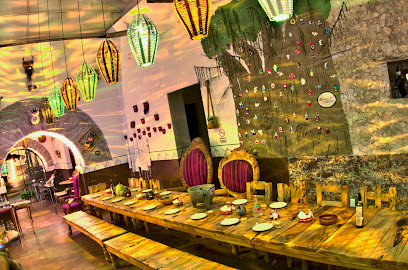
Tikua - SouthEast Mexican cuisine
Experience authentic SouthEast Mexican cuisine at Tikua in Santiago de Querétaro - where flavor meets tradition.
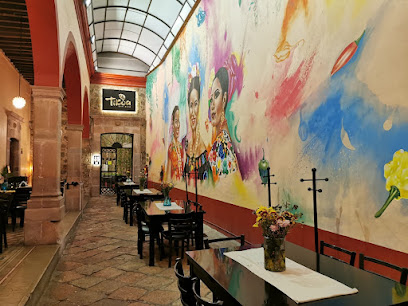
San Miguelito
Experience authentic Mexican cuisine at San Miguelito in Santiago de Querétaro – where tradition meets flavor in every bite.

Restaurante 1810
Experience authentic Mexican cuisine at Restaurante 1810 in Santiago de Querétaro - where every meal is a celebration of flavor.
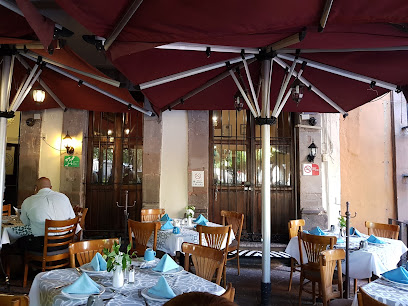
Carranza 50
Discover authentic Mexican flavors at Carranza 50 in Santiago de Querétaro – where culinary tradition meets vibrant atmosphere.
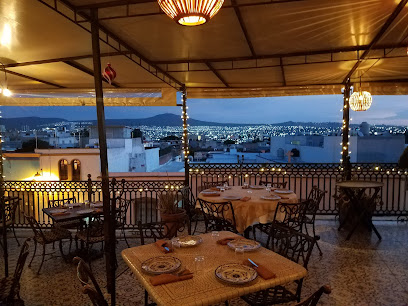
Terraza La Grupa
Experience authentic flavors and stunning views at Terraza La Grupa in Santiago de Querétaro – a culinary gem in Mexico's vibrant heart.
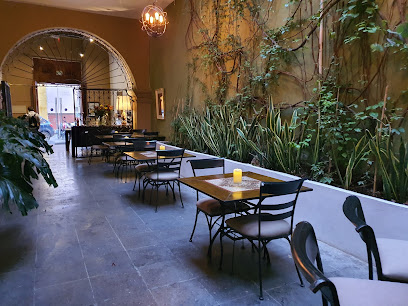
Di Vino Italian Restaurant
Discover authentic Italian flavors at Di Vino Italian Restaurant, where exquisite cuisine meets an inviting atmosphere in Querétaro.
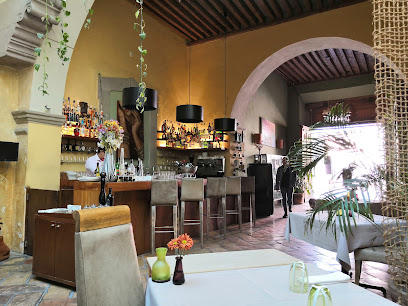
Querétaro rico Centro histórico
Explore Querétaro's historic center and savor authentic Mexican cuisine at this charming restaurant known for its delightful atmosphere and flavorful dishes.
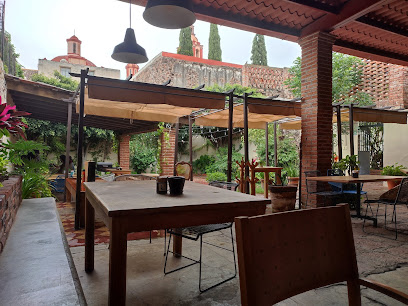
La Maison Gourmande
Experience authentic French cuisine at La Maison Gourmande in Santiago de Querétaro, where every dish is a culinary masterpiece.
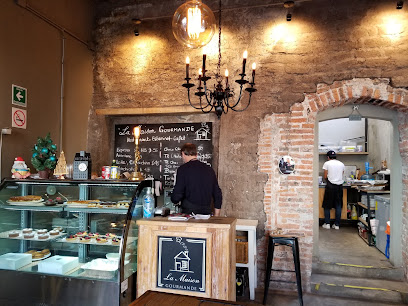
Markets, malls and hidden boutiques
Máscara De Látex Querétaro Centro Histórico
Explore unique fashion at Máscara De Látex Querétaro, where tradition meets style in the heart of Mexico's historic district.
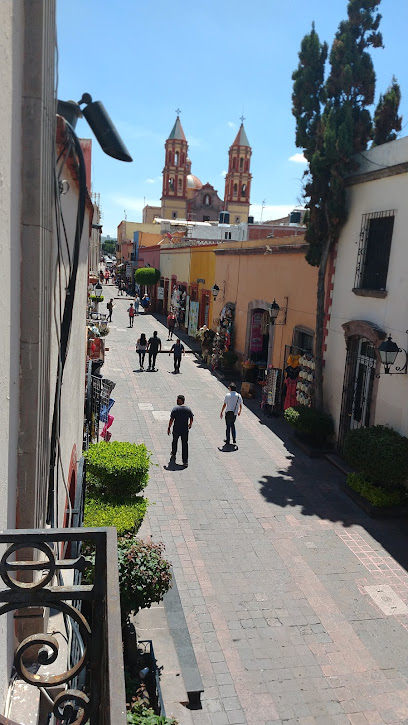
Antiguedades EL SITIO de Queretaro
Explore Antiguedades EL SITIO in Querétaro, a unique antique store filled with historical treasures and charming artifacts that capture the essence of Mexican culture.
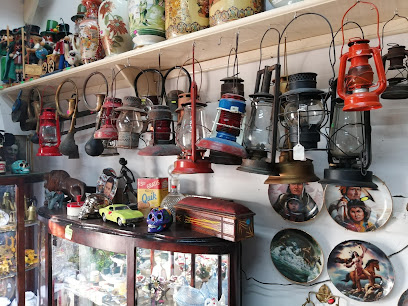
The American Shop QRO
Discover authentic American products at The American Shop QRO, a unique grocery store in the heart of Santiago de Querétaro, Mexico.
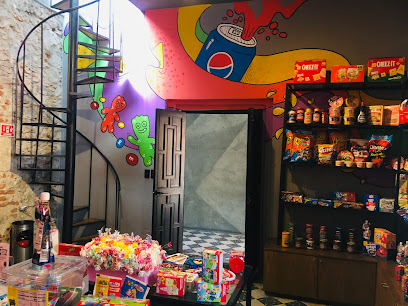
Hecho a mano y más
Explore Hecho a mano y más, Santiago de Querétaro's premier gift shop, for exquisite handcrafted ceramics, jewelry, and fashion that embody Mexican artistry and culture.
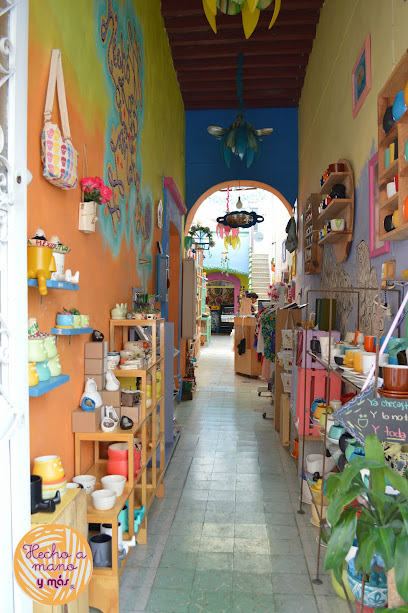
Santo Grial
Explore Santo Grial in Santiago de Querétaro for a unique fashion experience showcasing local design and creativity.
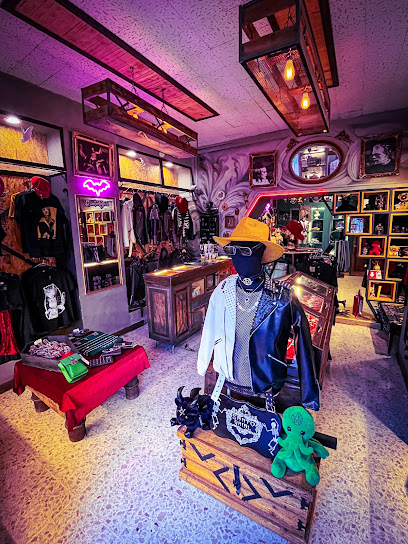
Motivos 9¾ Tienda Mágica
Explore Motivos 9¾ Tienda Mágica, a whimsical collectibles store in Santiago de Querétaro, where unique treasures and local charm await every visitor.
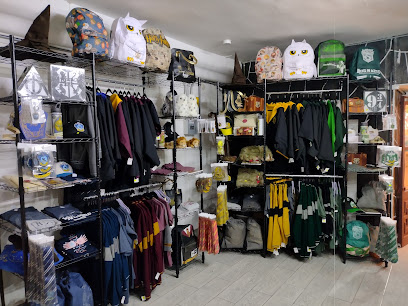
Peace Om Love Store
Explore Peace Om Love Store in Santiago de Querétaro for unique spiritual items and a tranquil shopping experience that embodies love and serenity.

15.St Boutique
Discover the essence of style at 15.St Boutique in Santiago de Querétaro, offering unique clothing selections that celebrate local culture.
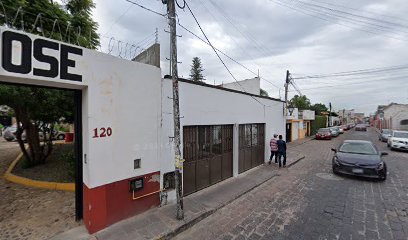
Centro histórico
Experience the charm of Querétaro's historic center, a UNESCO World Heritage site filled with stunning architecture, vibrant markets, and delicious cuisine.

Tendencia en Moda
Discover the essence of contemporary Mexican fashion at Tendencia en Moda, a stylish clothing store in Santiago de Querétaro's historic center.
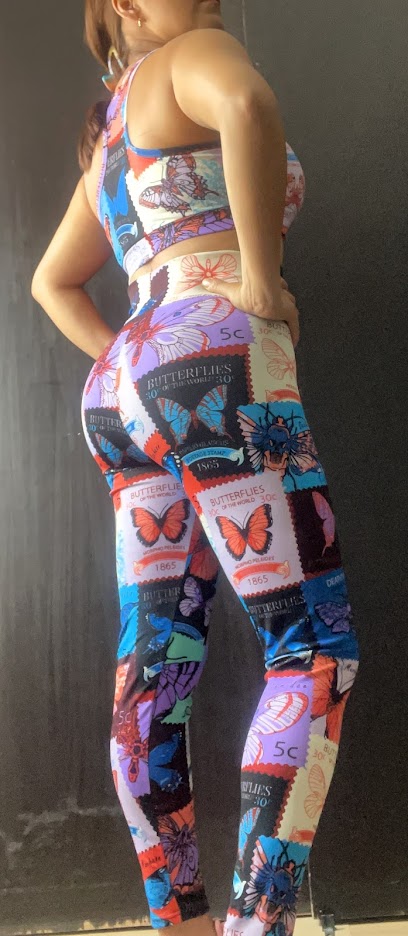
Essential bars & hidden hideouts
Alquimia Bar
Discover Alquimia Bar in Santiago de Querétaro: A vibrant cocktail bar offering innovative drinks and a lively atmosphere steeped in local culture.
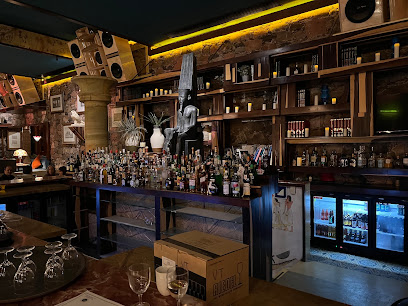
Petra’s Bar
Discover the vibrant nightlife at Petra's Bar in Santiago de Querétaro, offering a lively atmosphere, diverse drinks, and friendly locals.
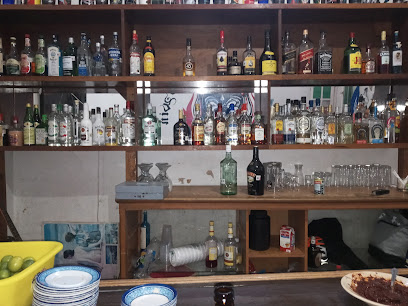
Funky Mama Resto-Bar
Experience vibrant nightlife at Funky Mama Resto-Bar in Santiago de Querétaro, where delicious food meets creative cocktails and live music.

Brewer Gastro Pub
Experience the best of local craft beers and delectable cuisine at Brewer Gastro Pub in Santiago de Querétaro.
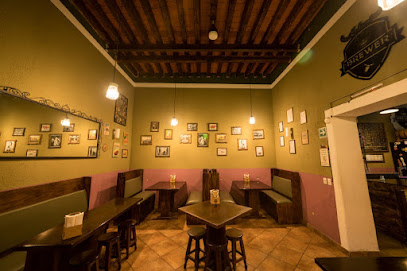
La Colección Bar
Discover La Colección Bar: A lively destination in Santiago de Querétaro offering a rich selection of drinks and a vibrant nightlife experience.
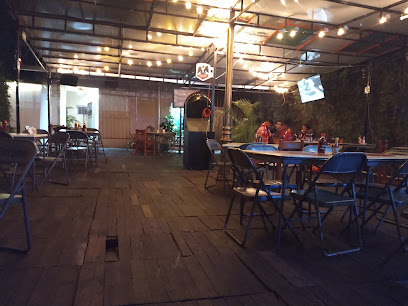
El Habano
Experience the vibrant atmosphere and exquisite flavors at El Habano, the premier bar in Santiago de Querétaro for rum and cigars.
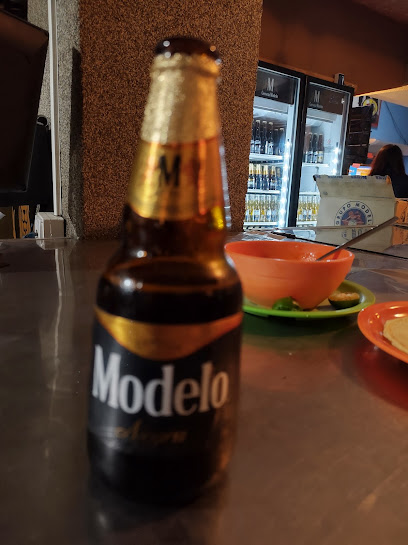
Tudor Cocktail Club
Discover artisan cocktails and a vibrant atmosphere at Tudor Cocktail Club, the premier cocktail bar in Santiago de Querétaro, Mexico.
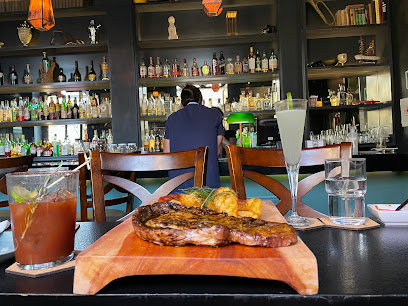
La perdida mezcal
Discover the essence of Mexico at La Perdida Mezcal, the premier bar for authentic mezcal experiences in Santiago de Querétaro.
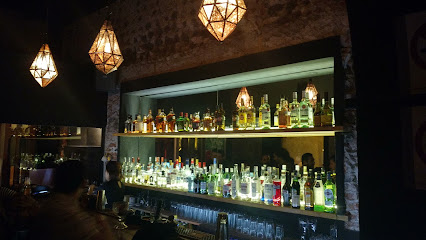
Public House Social Club
Experience the lively atmosphere of Public House Social Club, where cocktails, local brews, and vibrant nightlife come together in Santiago de Querétaro.
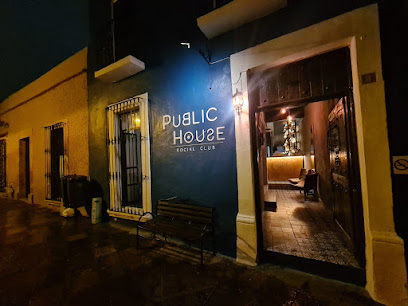
Chelatos Querétaro
Discover the lively atmosphere of Chelatos Querétaro, where vibrant nightlife meets delicious drinks in the heart of Santiago de Querétaro.
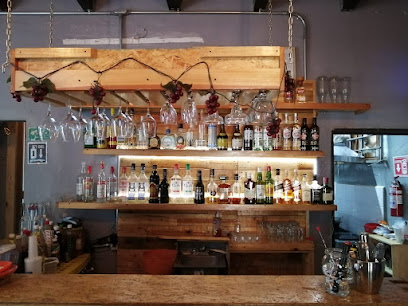
Local Phrases
-
- HelloHola
[oh-lah] - GoodbyeAdiós
[ah-dee-ohs] - YesSí
[see] - NoNo
[noh] - Please/You're welcomePor favor/De nada
[por fah-vor/de nah-dah] - Thank youGracias
[grah-syahs] - Excuse me/SorryPerdón/Lamento
[pehr-dohn/lah-mehn-toh] - How are you?¿Cómo estás?
[koh-moh ehs-tahs] - Fine. And you?Bien. ¿Y tú?
[byen. ee too] - Do you speak English?¿Hablas inglés?
[ah-blahs een-glehs] - I don't understandNo entiendo
[noh ehn-tyehn-doh]
- HelloHola
-
- I'd like to see the menu, pleaseMe gustaría ver el menú, por favor
[meh goos-tah-ree-ah behr ehl meh-noo, por fah-vor] - I don't eat meatNo como carne
[noh koh-moh kahr-neh] - Cheers!¡Salud!
[sah-lood] - I would like to pay, pleaseMe gustaría pagar, por favor
[meh goos-tah-ree-ah pah-gahr, por fah-vor]
- I'd like to see the menu, pleaseMe gustaría ver el menú, por favor
-
- Help!¡Ayuda!
[ah-yoo-dah] - Go away!¡Vete!
[veh-teh] - Call the Police!¡Llama a la policía!
[yah-mah ah lah poh-lee-see-ah] - Call a doctor!¡Llama a un doctor!
[yah-mah ah oon dohk-tohr] - I'm lostEstoy perdido/a
[ehs-toy pehr-dee-doh/dah] - I'm illEstoy enfermo/a
[ehs-toy ehn-fehr-moh/dah]
- Help!¡Ayuda!
-
- I'd like to buy...Me gustaría comprar...
[meh goos-tah-ree-ah kohm-prahr] - I'm just lookingSólo estoy mirando
[soh-loh ehs-toy mee-rahn-doh] - How much is it?¿Cuánto cuesta?
[kwan-toh kwehs-tah] - That's too expensiveEso es demasiado caro
[eh-soh ehs deh-mah-syah-doh kah-roh] - Can you lower the price?¿Puede bajar el precio?
[pweh-deh bah-hahr ehl pree-syoh]
- I'd like to buy...Me gustaría comprar...
-
- What time is it?¿Qué hora es?
[keh oh-rah ehs] - It's one o'clockEs la una
[ehs lah oo-nah] - Half past (10)Media (10)
[meh-dee-ah (deez-eez)] - MorningMañana
[mah-nyah-nah] - AfternoonTarde
[tahr-deh] - EveningNoche
[noh-cheh] - YesterdayAyer
[ah-yehr] - TodayHoy
[oy] - TomorrowMañana
[mah-nyah-nah] - 1Uno
[oo-noh] - 2Dos
[dohs] - 3Tres
[trehs] - 4Cuatro
[kwah-troh] - 5Cinco
[seen-koh] - 6Seis
[seys] - 7Siete
[syeh-teh] - 8Ocho
[oh-choh] - 9Nueve
[nweh-veh] - 10Diez
[dyehs]
- What time is it?¿Qué hora es?
-
- Where's a/the...?¿Dónde está...?
[dohn-deh ehs-tah] - What's the address?¿Cuál es la dirección?
[kwahl ehs lah dee-rehk-syon] - Can you show me (on the map)?¿Puedes mostrarme (en el mapa)?
[pweh-dehs mohs-trahr-meh (ehn ehl mah-pah)] - When's the next (bus)?¿Cuándo es el próximo (autobús)?
[kwan-doh ehs ehl prohk-see-moh (ow-toh-boos)] - A ticket (to ....)Un boleto (a ....)
[oon boh-leh-toh (ah)]
- Where's a/the...?¿Dónde está...?
History of Centro Historico
-
The history of Centro Histórico in Querétaro begins in the early 16th century when the Spanish conquistadors established the city in 1531. Querétaro quickly grew as an important colonial city due to its strategic location between Mexico City and the northern territories. The area thrived economically, becoming a center for trade and agriculture, with beautifully designed colonial buildings reflecting the Spanish Baroque architectural style.
-
In the early 19th century, Centro Histórico was the backdrop for a significant political conspiracy against Spanish rule known as the Conspiracy of Querétaro. Initiated in 1810 by local insurgents, including the priest Miguel Hidalgo, this movement ultimately led to the Mexican War of Independence. The conspirators held meetings in various locations around the city, which played a pivotal role in shaping Mexico's path to independence.
-
The 18th century saw a flourishing of architecture in Querétaro, with the construction of numerous churches, palaces, and public buildings. The iconic Querétaro Aqueduct, completed in 1738, stands as a testament to the engineering prowess of the time, featuring 74 arches that stretch for over a kilometer. This period left a rich architectural legacy that is still visible in the Centro Histórico today.
-
Throughout the 19th century, Querétaro established itself as a cultural center in Mexico. The city hosted prominent figures, including the renowned artist and educator José María Morelos. The establishment of educational institutions and cultural organizations during this time contributed to the growth of local arts and literature, making Centro Histórico a vibrant cultural hub.
-
In 1996, the historic center of Querétaro was designated as a UNESCO World Heritage Site, recognizing its rich history and well-preserved colonial architecture. This designation helped spur preservation efforts and increased tourism, allowing visitors to explore its vibrant streets, plazas, and historical landmarks, including the Teatro de la República and the Templo de Santa Rosa de Viterbo.
Centro Historico Essentials
-
Centro Historico is accessible from other neighborhoods in Queretaro via various modes of transportation. If you're coming from the bus terminal (Terminal de Autobuses), you can take a taxi or an Uber for a quick ride, which takes around 10-15 minutes. Local buses also connect the terminal to Centro Historico, with several lines running throughout the day. If you're in nearby neighborhoods like El Pueblito or Juriquilla, taxis and ride-sharing services are readily available, and the journey typically lasts 15-25 minutes depending on traffic.
-
Centro Historico is best explored on foot, as many attractions are within walking distance. The area is pedestrian-friendly with charming cobblestone streets. For longer distances, you can use local taxis or ride-sharing apps like Uber. Bicycles can be rented from various shops, and there are designated bike lanes in some areas. Public buses are also available but may not be the most convenient option for tourists unfamiliar with the routes.
-
Centro Historico is generally a safe neighborhood for tourists; however, standard safety precautions should be observed. Avoid walking alone late at night in poorly lit areas, especially in the outskirts of the neighborhood. While violent crime rates are low, petty theft can occur in crowded areas, so keep an eye on your belongings. Areas such as the outskirts of La Alameda and some parts near the bus terminal should be approached with caution, especially after dark.
-
In case of an emergency, dial 911 for police, fire, or medical assistance. The nearest hospital is Hospital General de Querétaro, located within a short taxi ride from Centro Historico. It is advisable to have travel insurance for medical emergencies. Pharmacies are located throughout the area for minor health issues, and many staff members speak English.
-
Fashion: Do dress modestly and comfortably, considering the warm climate. Don't wear overly revealing clothing, especially when visiting churches. Religion: Do respect local customs; when entering religious sites, dress appropriately and maintain silence. Public Transport: Do offer your seat to the elderly or disabled. Don't eat or drink on public transport. Greetings: Do greet locals with a friendly 'Hola' and a smile. Don't use overly formal greetings unless in a professional setting. Eating & Drinking: Do try local dishes such as enchiladas and tacos. Don't waste food or refuse hospitality, as it may be considered rude.
-
To experience Centro Historico like a local, visit the bustling Plaza de Armas, where you can enjoy street food and local crafts. Explore the hidden gems of the neighborhood, such as small art galleries and local artisan shops. Engage with locals in cafes and on the streets; they are often eager to share their culture and history. Don’t miss the weekend artisan market at Plaza de la Paz for unique souvenirs and local delicacies.
Trending Landmarks in Centro Historico
-
Alameda Hidalgo
-
Guía de turistas de la ciudad de Querétaro
-
Mirador de los Arcos
-
Jardín Guerrero
-
Acueducto de Querétaro
-
Plaza de los Fundadores
-
Monument of the Corregidora
-
Neptune Fountain
-
Museo Regional de Querétaro
-
Museo Casa de la Zacatecana
-
Museo de la Ciudad
-
Las letras de Querétaro
-
The Children Heroes of the Battle of Chapultepec
-
Arcos Qro
-
Monumento a la Bandera
Nearby Cities to Centro Historico
-
Things To Do in San Miguel de Allende
-
Things To Do in Guanajuato
-
Things To Do in Mexico City
-
Things To Do in Taxco
-
Things To Do in Puebla
-
Things To Do in Guadalajara
-
Things To Do in Ixtapa-Zihuatanejo
-
Things To Do in Acapulco
-
Things To Do in Veracruz
-
Things To Do in Puerto Vallarta
-
Things To Do in Oaxaca
-
Things To Do in Monterrey
-
Things To Do in Puerto Escondido
-
Things To Do in Matamoros
-
Things To Do in Brownsville






